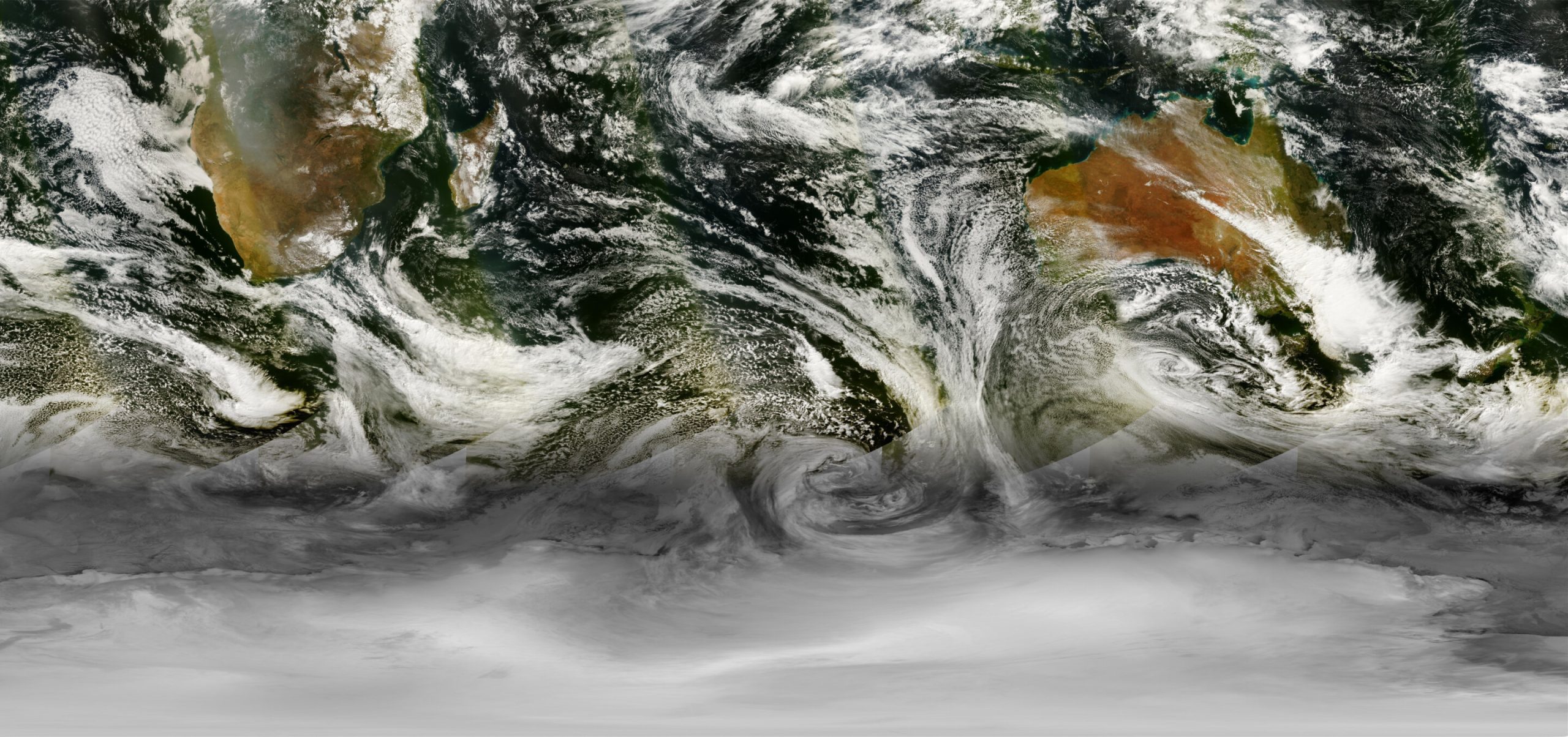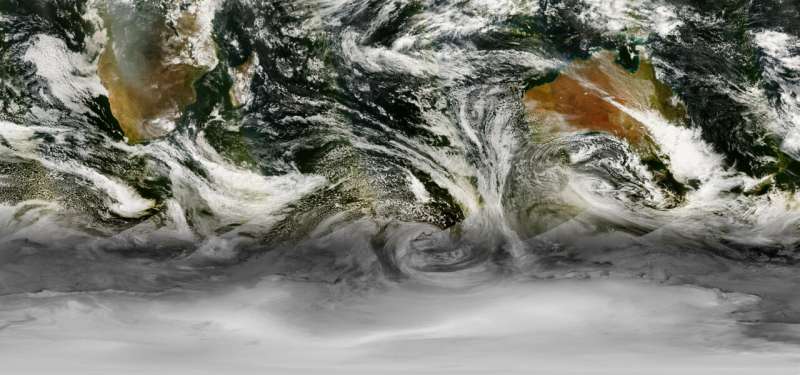

Clouds can cool or warm the planet’s surface, a radiative effect that contributes significantly to the global energy budget and can be altered by human-caused pollution. The world’s southernmost ocean, aptly named the Southern Ocean and far from human pollution but subject to abundant marine gases and aerosols, is about 80% covered by clouds. How does this body of water and relationship with clouds contribute to the world’s changing climate?
Researchers are still working to figure it out, and they’re now one step closer, thanks to an international collaboration identifying compensation errors in widely used climate model protocols known as CMIP6. The researchers published their findings on September 20 in Advances in Atmospheric Sciences.
“Cloud and radiation biases over the Southern Ocean have been a long-lasting problem in the past generations of global climate models,” said corresponding author Yuan Wang, now an associate professor in the Department of Earth, Atmospheric, and Planetary Sciences at Purdue University. “After the latest CMIP6 models were released, we were anxious to see how they performed and whether the old problems were still there.”
CMIP6, a project of the World Climate Research Program, allows for the systematic assessment of climate models to illuminate how they compare to each other and real-world data. In this study, Wang and the researchers analyzed five of the CMIP6 models that aim to serve as standard references.
Wang said the researchers were also motivated by other studies in the field that point to the Southern Ocean’s cloud coverage as a contributing factor to some CMIP6 models’ high sensitivity, when the simulations predict a surface temperature that rises too quickly for the rate of increased radiation. In other words, if improperly simulated, the Southern Ocean clouds may cast a shadow of doubt on the projection of future climate change.
“This paper emphasizes compensating errors in the cloud physical properties in spite of overall improvement of radiation simulation over the Southern Ocean,” Wang said. “With space satellite observations, we are able to quantify those errors in the simulated cloud microphysical properties, including cloud fraction, cloud water content, cloud droplet size and more, and further reveal how each contributes to the total bias in the cloud radiative effect.”
The cloud radiative effect—how clouds interfere radiation to warm or cool the surface—is largely determined by the physical properties of the cloud. “Cloud radiative effects in CMIP6 are comparable with satellite observations, but we found there are large compensating biases in cloud fraction liquid water path and droplet effective radius,” Wang said. “The major implication is that even though the latest CMIP models improve the simulation of their mean states, such as radiation fluxes at the top of the atmosphere, the detailed cloud processes are still of large uncertainty.”
According to Wang, this discrepancy also partially explains why the model climate sensitivity assessments do not perform as well, since those assessments rely on model detailed physics—rather than the mean state performance—to evaluate the overall effect on the climate.
“Our future work will aim to pin down individual parameterizations that are responsible for these biases,” Wang said. “Hopefully, we can work closely with model developers to get them solved. After all, the ultimate goal of any model evaluation study is to help improve those models.”
Other contributors include Lijun Zhao and Yuk L. Yung, Division of Geology and Planetary Science, California Institute of Technology; Chuanfeng Zhao, Department of Atmospheric and Oceanic Sciences, School of Physics, Peking University; and Xiquan Dong, Department of Hydrology and Atmospheric Sciences, University of Arizona.
Scientists discover coupled mode of cloud, atmospheric circulation, and sea ice in Antarctic winter
Compensating Errors in Cloud Radiative and Physical Properties over the Southern Ocean in the CMIP6 Climate Models, Advances in Atmospheric Sciences (2022). DOI: 10.1007/s00376-022-2036-z
Chinese Academy of Sciences
Citation:
Updated climate models are clouded by scientific biases, researchers find (2022, September 20)
retrieved 20 September 2022
from https://phys.org/news/2022-09-climate-clouded-scientific-biases.html
This document is subject to copyright. Apart from any fair dealing for the purpose of private study or research, no
part may be reproduced without the written permission. The content is provided for information purposes only.

